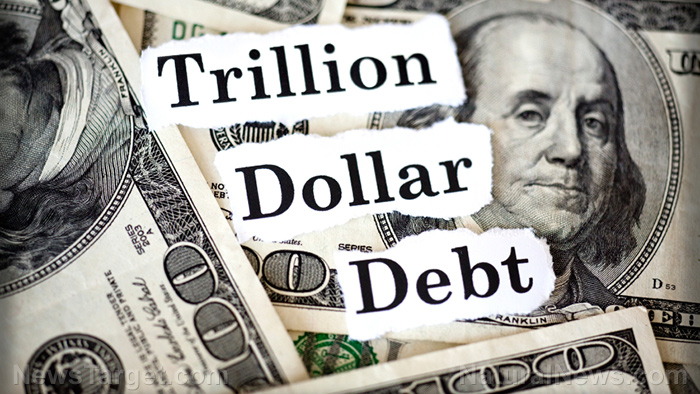
According to the analysis released on November 7, the figures are twice the interest costs over the past 19 months and are the equivalent of 15.9 percent of the federal budget for fiscal year 2022. The estimated interest expense is calculated using U.S. Treasury data which states the government's monthly outstanding debt balances and the average interest it pays.
"The worsening metrics may reignite debate about the United States fiscal path amid heavy borrowing from Washington. That dynamic has already helped drive up bond yields, threatened the return of the so-called bond vigilantes, and led Fitch Ratings to downgrade U.S. government debt in August," the news site reported.
Moreover, Bloomberg Intelligence strategists Ira Jersey and Will Hoffman wrote in a research note that there will be further increases in Treasury coupon auctions and T-bills outstanding moving forward. "Besides deficits of over $2 trillion in the foreseeable future, climbing maturities following the increase of issuance from March 2020 will also need to be refinanced," the authors said.
Meanwhile, the Congressional Budget Office (CBO) has estimated that the cumulative deficit for the 2024-2033 period will total $20.2 trillion, or 6.1 percent of gross domestic product (GDP). Deficits are expected to be at least 5.5 percent of GDP every year for the coming decade. Since 1973, the federal government budget deficit has averaged 3.6 percent of GDP.
Analysts blame the Federal Reserve's aggressive rate-hiking campaign on jacking up the cost of credit for borrowers across the economy. Higher borrowing costs mean the government pays more interest on its debt. And rising U.S. debt interest payments create a vicious feedback loop of attracting new borrowers, Treasury yields will then have to rise to sweeten the deal, and higher yields aggravate already-high borrowing costs on total debt that now exceeds $33 trillion. (Related: U.S. national debt hits the $33 trillion mark, with $1 trillion incurred in just the last 3 months.)
"Ever since the government debt was downgraded on August 1, people have been focusing on the deficit issue," market expert Ed Yardeni said in an interview with CNBC in September. "If inflation kind of stays sticky here, I think we're going to have a real problem, and my friends, the bond vigilantes, may need to come into force to convince politicians we've got to do something more fundamental about reducing the long-term outlook for the deficit."
If U.S. debt is not brought under control over the next few decades, a default of some form may be unavoidable, according to a Penn Wharton Budget Model, an economic pattern that allows real-world detail while incorporating the ability to analyze new policy changes.
National debt to climb rapidly in coming years
In July, the Peter G. Peterson Foundation predicted that the national debt would climb rapidly over the next several years, and higher interest rates could make the nation's fiscal outlook even worse. CBO released long-term projections in June which showed that debt held by the public would climb from 98 percent of GDP in 2023 to 181 percent in 2053 if no changes to current laws are made. Rising interest rates are a significant contributor to that growth in debt.
The foundation pointed out in the report that interest rates on Treasury securities have a significant influence on federal borrowing costs, and therefore, on the amount of federal debt accrued. CBO constructed two scenarios to analyze the effects of interest rates on federal debt. First is the higher interest rate scenario, in which the average interest rate on federal debt is five basis points, or 0.05 percentage points, higher than CBO anticipated in 2023 and increases by that amount each year thereafter, eventually reaching 5.8 percent in 2053. Second is the lower interest rate scenario, where the average interest rate on federal debt is lower than CBO's baseline projections by the same amount in the higher rate scenario, eventually reaching 2.2 percent in 2053.
In the higher interest rate scenario, government debt could reach 231 percent of GDP in 2053, which is 50 percentage points higher than CBO's baseline projections. If interest rates are lower, federal debt would still climb, but by a lesser amount, like 143 percent of GDP by 2053.
"The national debt is already on an unsustainable path, caused by a structural mismatch between spending and revenues, and rising interest rates could exacerbate that problem," the institution's website pointed out, adding that a way to mitigate the risks of potentially higher interest rates would be for policymakers to put the nation on a sustainable fiscal path.
Check out DebtBomb.news for more stories on America's bursting debt bubble.
Watch the video below that talks about the unstoppable debt collapse.
This video is from the MEGA (Make Earth Great Again) channel on Brighteon.com.
More related stories:
Public NUMBS as government DEBT BOMB explodes to $33T, annual budget DEFICIT approaches $2T.
National debt hits record-high $32 trillion two weeks after suspension of debt ceiling.
Sources include:
Please contact us for more information.

















